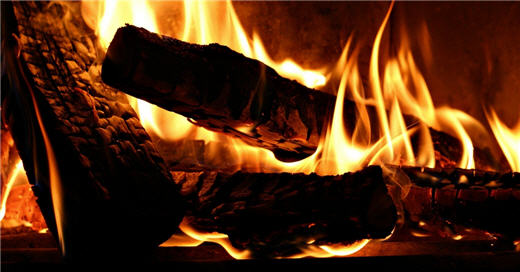Here at Stove Sellers we are often asked whether our woodburning stoves can stay safely lit overnight. Is it possible for the firebox to remain hot enough to flicker for 8-10 hours and provide ambient heat through the wee small hours without tending to it? The answer is a definite “yes”: with a bit of practice and care, you can come downstairs in the morning to a warm stove! Here we show you how to do so efficiently and safely.
Using a Woodburning Stove Overnight
Safety first
The safety of your home is paramount, of course, and you need to ensure that leaving your woodburning stove lit overnight will not pose a fire hazard. You need to have your chimney swept at least once every year (twice a year by french regulations) to minimise the risk of a chimney fire and do remove any potentially flammable items from your fireplace before you leave your stove for the night. This includes wax candles and boxes filled with kindling and paper.
Choose the wood for your woodburning stove carefully
You can’t just throw any old wood on your fire and expect it to burn all night. The idea is to stack hard wooden logs of a regular size carefully inside the stove. If there are as few air gaps as possible, the fire will keep going for much longer than if you fill it with unevenly shaped pieces of rough wood.
Dampen down the flames
Light your woodburning stove a good 4-5 hours before bedtime to allow a good bed of ash to build up. You will then need to carefully stack your wood, leaving only minimal space between logs. From a safety point of view, you want to dampen down the fire as much as you possibly can before retiring for the night and using ash is a great way of doing this effectively. Gradually pour the ash from your ash tray onto your flames and this will help to slow down the burn. You may wish to decant the ash into a heat-proof container first so you can do this without spilling any hot ashes.
Close air vents
Once the flames have been dampened down, close your stove’s air vents to control the levels of oxygen getting to the fire: by doing this, the fuel will burn for longer. Once the embers are glowing orange, you can leave your wood burning stove for the night.
Stoke up in the morning
When you return to your stove in the morning, the embers should still be burning and glowing. If you then open the air vents, the fire will light again at once. You may need to put in some kindling wood to encourage the flames, after which you can add some more logs.
Our extensive range of woodburning stoves are elegant, energy efficient and easy-to-use. In addition to this, our prices are hard to beat! Have a look at our collection today!



